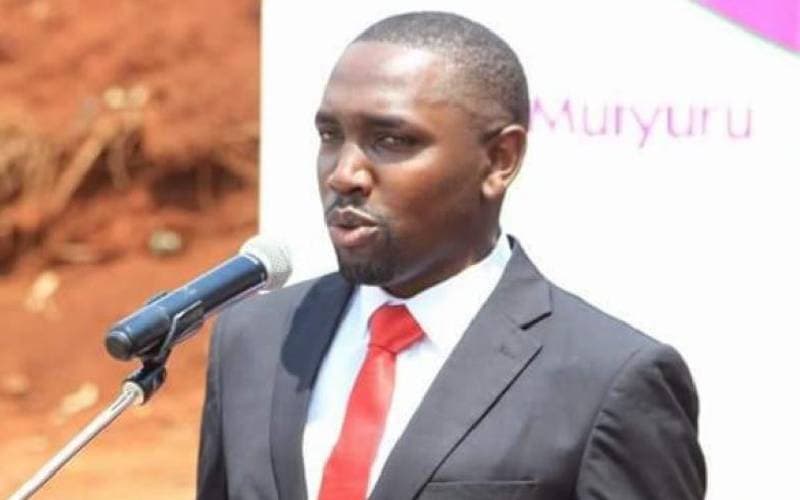We're loading the full news article for you. This includes the article content, images, author information, and related articles.
A widening rift between Murang'a's national and county legislators, fueled by competing loyalties to national political figures and disputes over development projects, threatens to destabilize local governance and service delivery as early 2027 realignments take shape.

MURANG'A, KENYA – A significant political fissure is deepening in Murang'a County, pitting Members of Parliament (MPs) against Members of the County Assembly (MCAs) in a multifaceted struggle for influence, resources, and political alignment ahead of the 2027 General Election. The conflict, rooted in national succession politics and local development control, is increasingly disrupting governance and reflects a broader battle for political dominance in the vote-rich Mt. Kenya region.
The division became starkly public following a series of boycotts and rival meetings that exposed the fault lines within the ruling United Democratic Alliance (UDA) party. A majority of Murang'a's 35 MCAs have shown allegiance to former Deputy President Rigathi Gachagua, positioning him as a key regional voice. This faction has openly resisted directives from national figures, signaling growing discontent with the central government's performance and influence in local affairs. In contrast, most of the county's MPs have remained aligned with President William Ruto, actively promoting his bid for a second term and endorsing government policies.
The political schism has been marked by several high-profile incidents. In late 2022, MCAs led by Kariara Ward representative Gichobe Mbatia walked out of a meeting intended to endorse Professor Kithure Kindiki as the Mt. Kenya spokesman, a move seen as a direct challenge to the MPs' preferred political direction. This was followed by a significant boycott in September of that year when 27 MCAs snubbed a crucial meeting at State House, further cementing their opposition.
More recently, in September 2025, the divisions were again on full display. While President Ruto hosted a delegation of Murang'a leaders, including MPs, at State House, Nairobi, a large contingent of MCAs attended a parallel meeting with Gachagua at his Nyeri residence. Gachagua and his allies, including Murang'a Senator Joe Nyutu, used the occasion to accuse the President of attempting to use financial inducements to "buy loyalty" from grassroots leaders, an allegation that has intensified the political rhetoric.
Beyond the national power plays, the conflict is fundamentally about the control of development projects at the grassroots level. MCAs have repeatedly voiced their frustration at being sidelined from key national government initiatives being implemented in their wards. In February 2025, members of the county assembly decried their exclusion from the National Agricultural Value Chain Development Project (NAVCDP). Gatanga MCA John Kibaiya and Kahumbu MCA Isaac Njoroge expressed embarrassment over their lack of knowledge about a project directly impacting their constituents, with Njoroge claiming the process was being influenced by their political opponents.
This mirrors a nationwide tension between the two levels of elected leaders. MPs control the National Government Constituencies Development Fund (NG-CDF), while MCAs oversee ward-level projects funded by the county government. This dual system often creates competition for political credit and control over resources, hindering coordinated development. Murang'a Governor Irungu Kang'ata has previously acknowledged the need for a harmonious relationship, stating that governors must allow MCAs autonomy and a share in development funds to prevent political instability.
The escalating infighting poses a direct threat to service delivery in Murang'a. A divided leadership could derail key initiatives in infrastructure, healthcare, and education as political battles divert focus and resources. The situation in Murang'a is a microcosm of the challenges facing the ruling administration in maintaining unity in its political strongholds. The fragmentation within the UDA party in a county considered its backyard highlights the complex dynamics of succession politics.
As the 2027 elections approach, the political climate is becoming increasingly charged, with warnings from the National Cohesion and Integration Commission (NCIC) about rising ethnic incitement and hostility. An incident in July 2025 involving gun attacks on opposition leaders in Murang'a was cited by an NCIC commissioner as a worrying sign of politically motivated violence. The ongoing power struggle between MPs and MCAs, if left unresolved, threatens not only to paralyze local development but also to contribute to a volatile political environment ahead of the next electoral cycle.
Keep the conversation in one place—threads here stay linked to the story and in the forums.
Other hot threads
E-sports and Gaming Community in Kenya
Active 6 months ago
Popular Recreational Activities Across Counties
Active 6 months ago
The Role of Technology in Modern Agriculture (AgriTech)
Active 6 months ago
Investing in Youth Sports Development Programs
Active 6 months ago